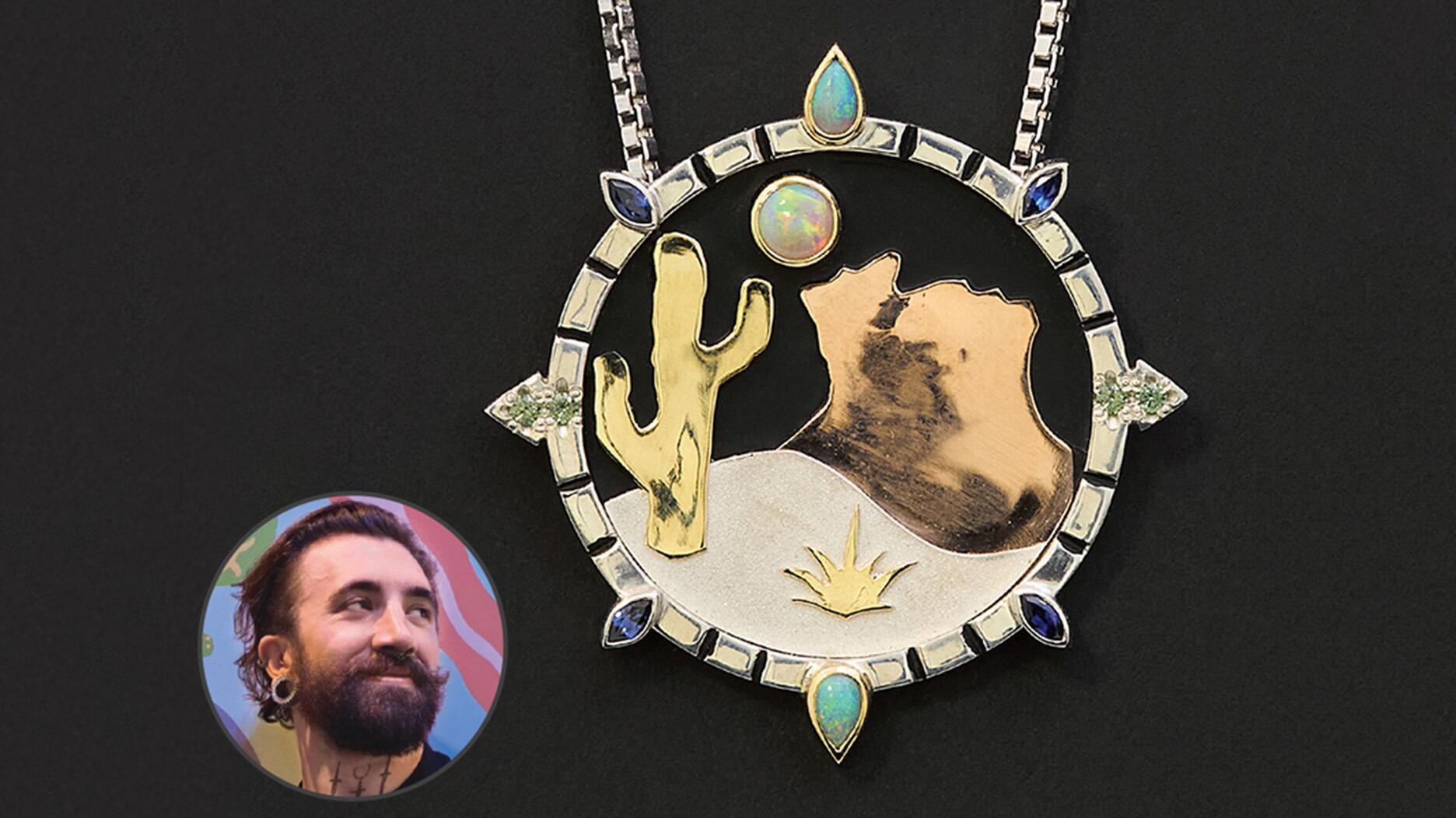These Pearl Jewels Won the 2022 CPAA Design Competition
The Cultured Pearl Association of America held its 13th annual International Pearl Design Competition this fall.

The competition has three divisions: U.S. entries, international entries, and student entries.
The final judging for all three divisions was held in-person on Nov. 1 in New York City.
This year’s judges were: Jean Francois Bibet, workshop and production director at Cartier; Patricia Faber, co-owner of Aaron Faber Gallery; Lenore Fedow, associate editor at National Jeweler; Maria Tsangaropoulos, supervisor of instruction at GIA’s New York City campus; Michael Coan, assistant professor in the jewelry design department at the Fashion Institute of Technology; and Kathy Zaltas, owner of Zaltas Gallery.
Peggy Grosz, senior vice president at Assael, helped to judge part one of the entries but was not present for live judging.
Here are this year’s winners.
President’s Trophy
The President’s Trophy is the top prize of the contest, awarded to the piece that was considered to be the most beautiful. It has to have an original design concept, be well-made, celebrate pearls, and “leave a lasting impression of pearls as must-have gems.”
This year’s U.S. winner was the “Oceana” pearl earrings by Tariq Riaz LLC. The earrings, seen in the main image, are 18-karat white, rose, and yellow gold with 4.5mm to 6.6 mm Akoya pearls, 21 x 15 mm South Sea pearls, and 10 x 7 mm freshwater pearls, as well as 7.40 carats of diamonds, 1.28 carats of pink sapphires, and 1.25 carats of tsavorites.
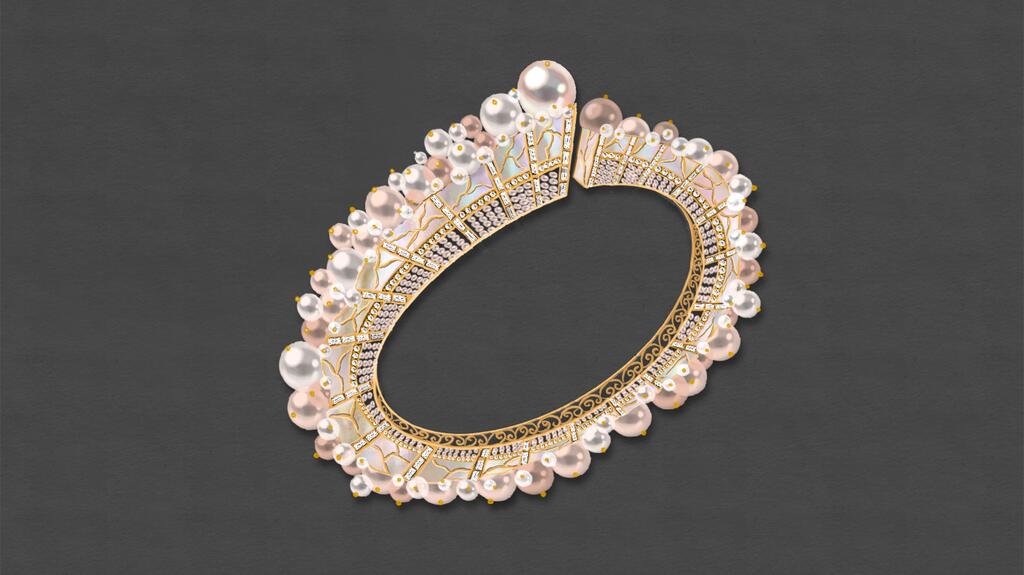
The international winner was the “Kentsugi” bracelet by Shikha Pathak for C Krishniah Chetty Group of Jewellers of India.
Made in 18-karat yellow gold, the bracelet features 8 mm to 20mm white, pinkish-, and champagne-colored South Sea cultured pearls, mother-of-pearl with gold inlay, and round and baguette-cut diamonds.
Luster Award
The Luster Award is given to the piece that displays “covetable and marketable concepts” with wide appeal for the marketplace. A new requirement for this year’s contest is the piece must retail for $3,000 or less.
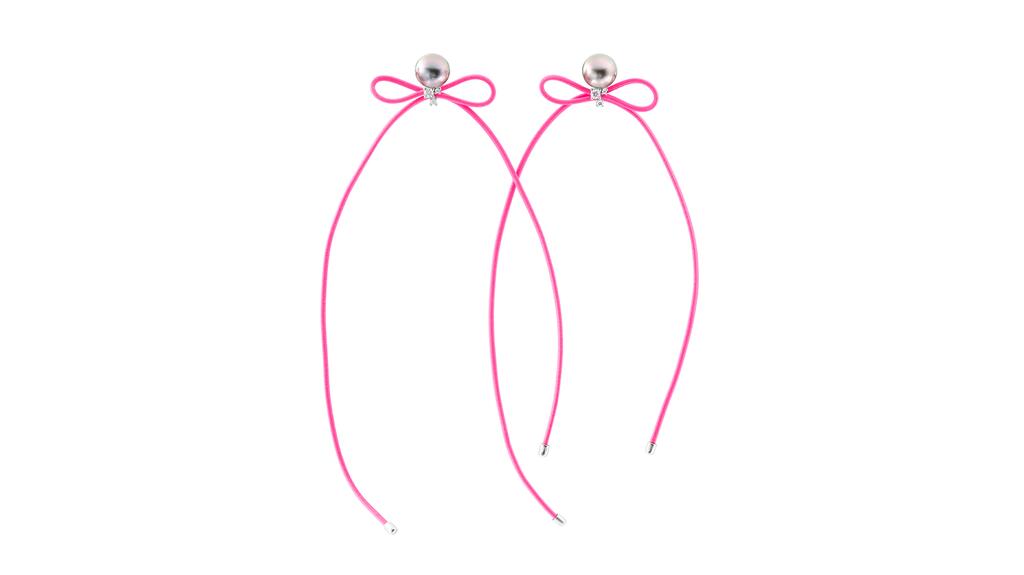
The U.S. winner was the Tahitian Pearl Drawstring earrings by Chaulri. Set in 18-karat white gold, the earrings feature Tahitian black pearls, diamonds, and removable neon pink drawstring bows. The pair retails for $1,720.
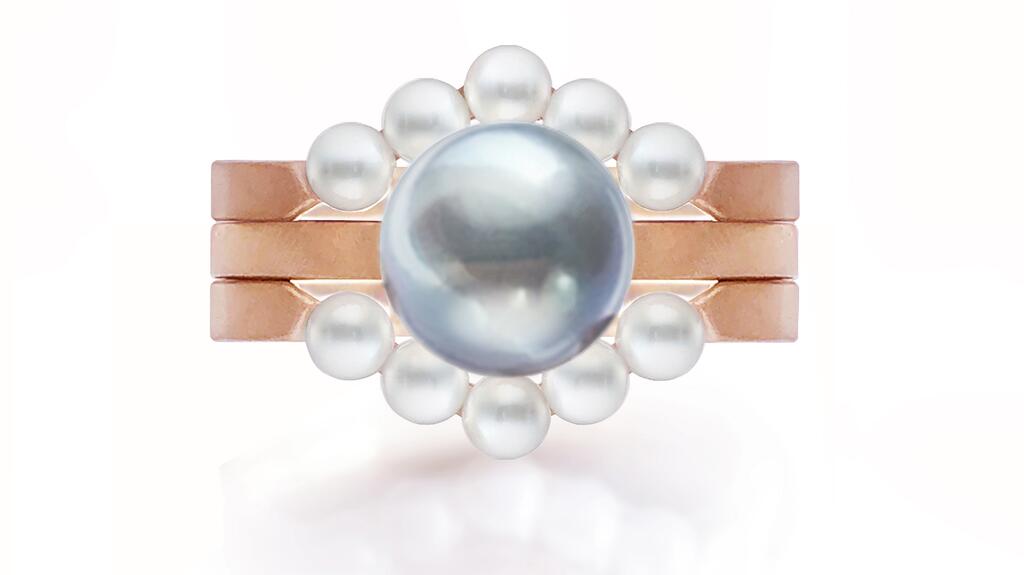
The international winner is the “Venus” ring set by Neu & Tim of Japan.
The rings are made in 10-karat pink and yellow gold with a 7.5 mm to 8 mm Akoya pearl center and 3 mm to 5 mm Akoya pearls on companion bands. The set retails for $2,910.
Visionary Award
The Visionary Award goes to the piece with a design concept that combats challenges the idea that pearls are dated. The piece must also be attractive, creative, and salable.
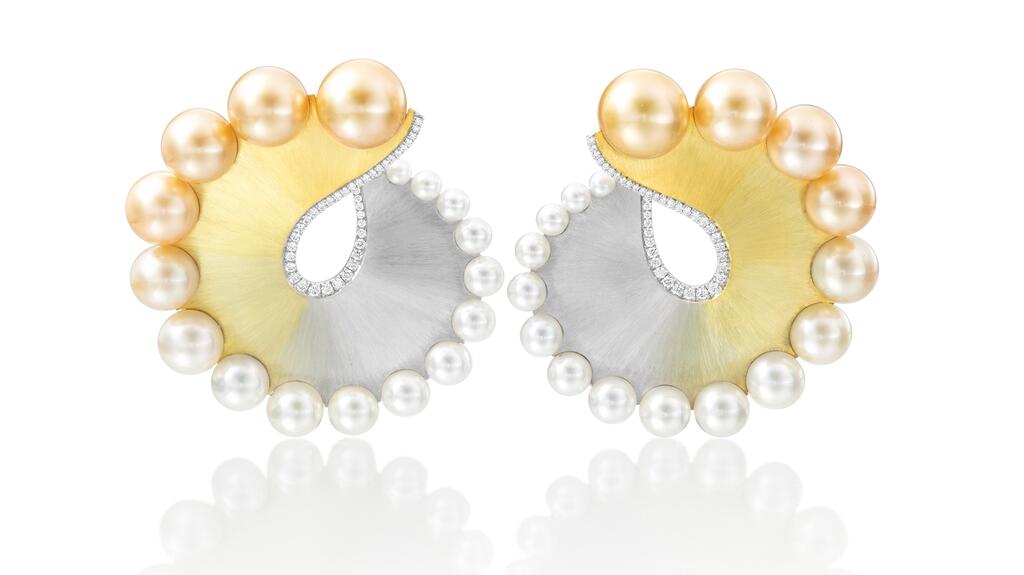
The U.S. winner is the “Nautilus” earrings by Adam Neeley Fine Art Jewelry Inc.
The earrings feature proprietary gradient “SpectraGold” with an ombré suite of 36 pearls ranging from 10.6 mm golden South Sea pearls graduating down to 2.5 mm white Akoya pearls with 0.48 total carats of pavé-set diamonds.
In the international division, there was a two-way tie.
The first winner was the “Bubble” ring by Melanie Georgacopoulos of Melanie Georgacopoulos of the U.K. The ring is made of 18-karat rose gold and set with a 13 mm Tahitian pearl.
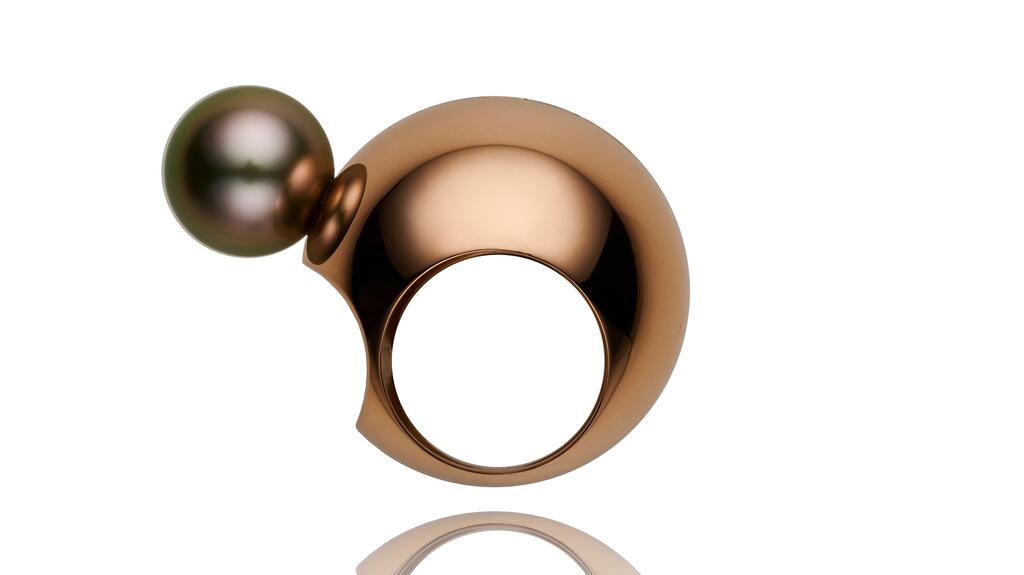
The second winner is the “Overtone” earrings by Alexia Gryllaki of Alexia Gryllaki of Greece.
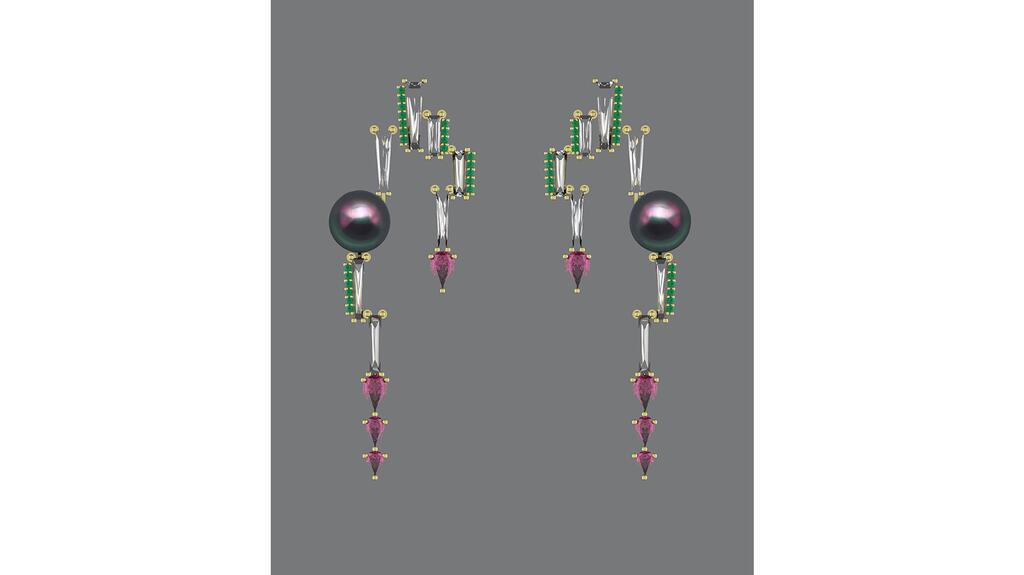
The 18-karat yellow gold earrings feature Tahitian pearls, 2.63 total carats pear-shape garnets, 1.1 total carats tapered baguette-cut diamonds, and 0.44 total carats emeralds.
Wedding Day Pearls
The Wedding Day Pearls award goes to the piece a contemporary bride or groom would wear on their wedding day.
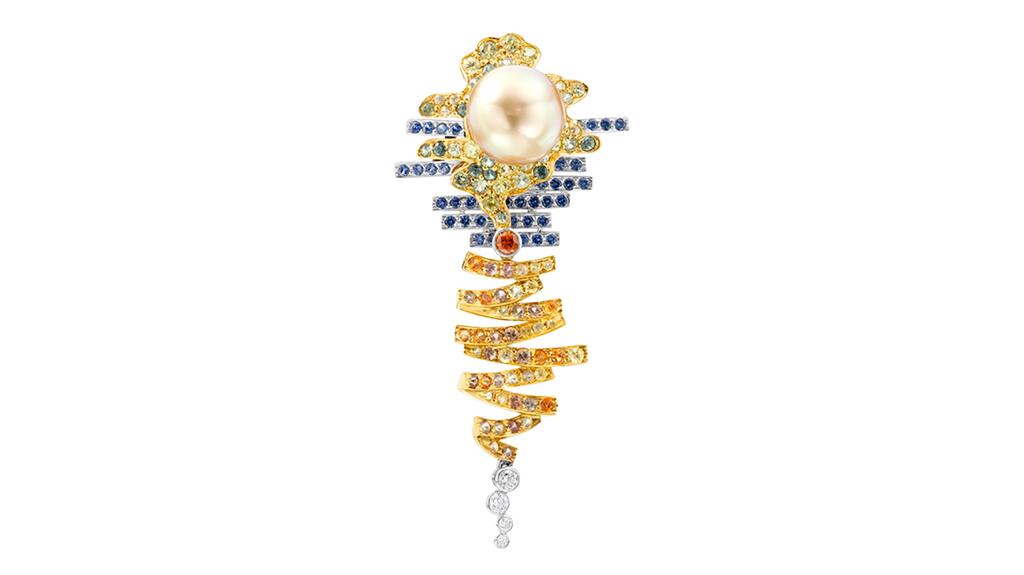
This year’s U.S. winner is the “Sunrise Revisited, Tribute to Monet” pin/pendant by S. D. Cusson LLC.
The piece is comprised of three flexible sections of 18-karat white and yellow gold with one 13.12 mm South Sea golden pearl, 1.70 total carats round yellow and green tourmaline, 1.19 total carats round mandarin garnets, 0.65 total carats round blue sapphires, 0.35 total carats round yellow sapphires, and 0.25 total carats round diamonds.
In the international division, the “Kentsugi” bracelet mentioned previously also won this category.
Fashion Award
The Fashion Award goes to the piece that displays a “youthful, high-fashion, and original pearl jewelry design.”

This year’s U.S. winner was the “Treasure of the Sea” bracelet by Crevoshay, the New Mexico-based company headed by designer Paula Crevoshay.
Set in 18-karat yellow gold, the bracelet features 11 mm white South Sea pearls, 9.88 total carats sapphires, 8.62 total carats moonstones, 8.07 total carats tsavorite garnets, and 6.09 total carats diamonds.
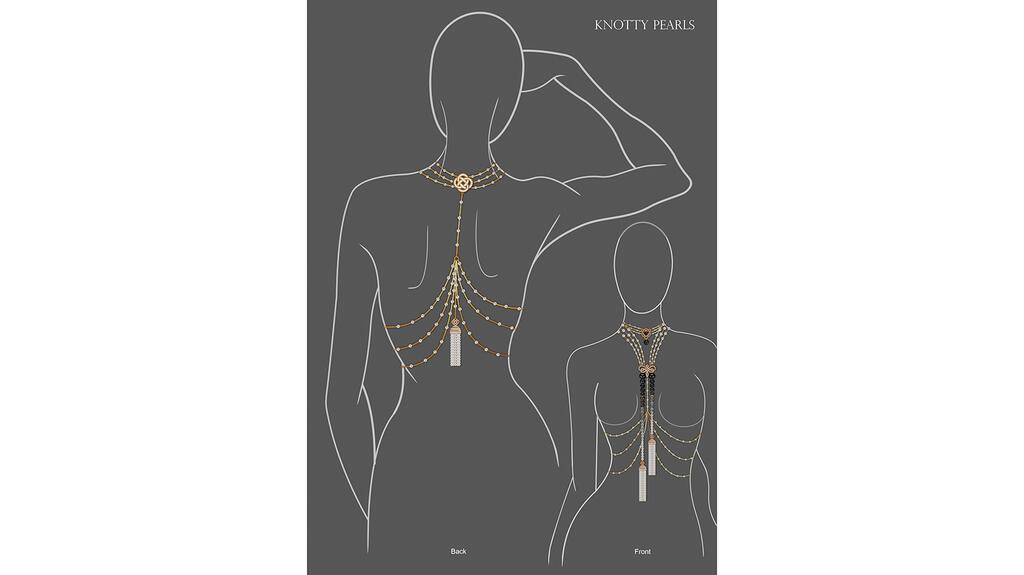
The international winner was the “Knotty Pearls” body accessory by Shakshi Poddar for C Krishniah Chetty Group of Jewellers of India.
The convertible body chain necklace features 18-karat yellow gold with 2 mm to 12 mm Tahitian and South Sea pearls and round brilliant-cut diamonds.
Spotlight Award
The Spotlight Award honors a different pearl variety each year. This year the pearl of choice was baroque-shaped pearls of all varieties, saltwater and freshwater.
The category highlighted designs where 75 percent of the piece featured a baroque-shaped pearl. The winner had to showcase the pearl in a clever way and create a design that would entice a person who was not a fan of pearls to start collecting.
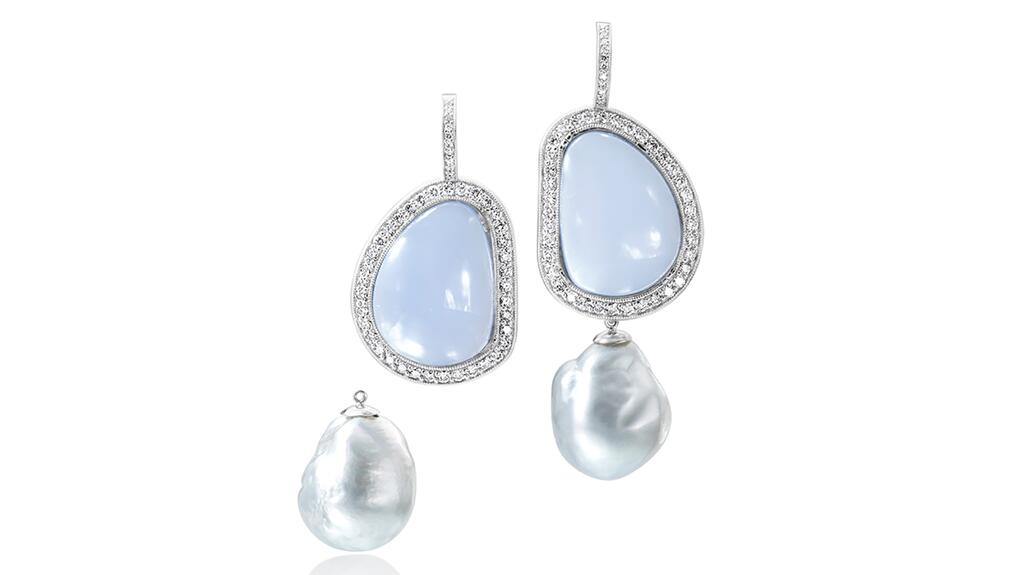
The U.S. winner was the detachable South Sea baroque pearl, natural Namibian chalcedony, and diamond earrings by Ashleigh Branstetter of Ashleigh Branstetter.
The earrings are set in 18-karat white gold with rhodium with baroque 18.19 x 15.75 mm and 18.24 x 15.83 mm white South Sea cultured pearls, 25.09 total carats Namibian chalcedony, and 1.58 total carats diamonds.
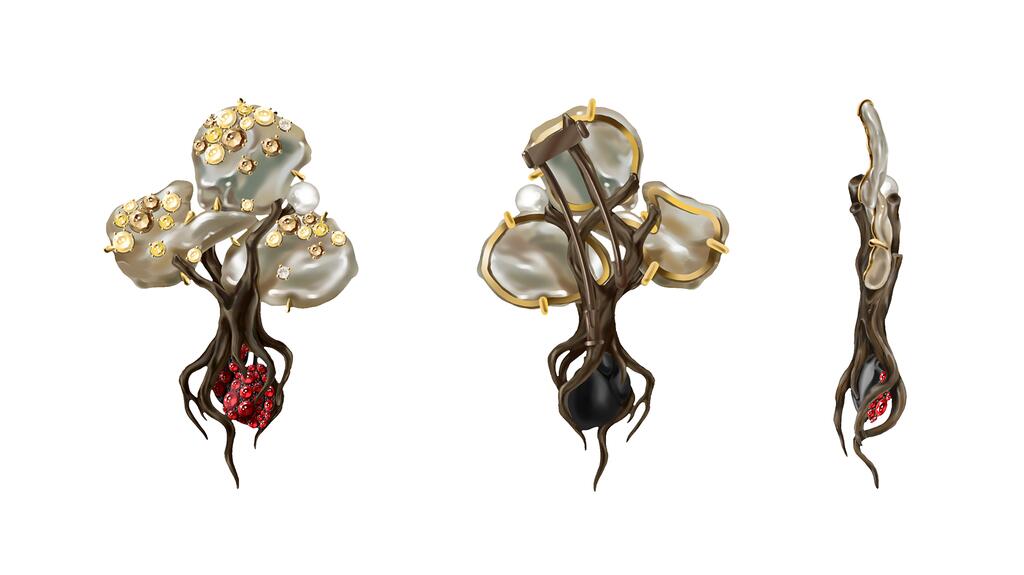
The international winner was the “Pan’s Tree” brooch by YiJ Jewelry of China.
The brooch is made in 18-karat gold and black gold with freshwater keshi pearls, yellow and brown diamonds, and rubies.
Retailer’s Choice Award
To bestow the Retailer’s Choice Award, the CPAA asked 4,000 jewelers to choose their favorite piece from the U.S. finalists.
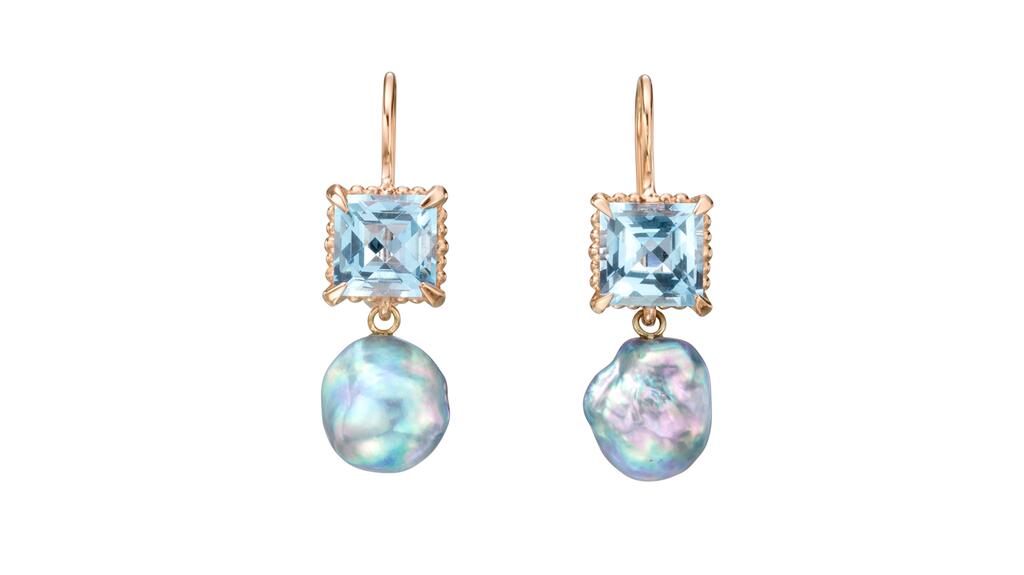
The winner was the “Thermal Blue Byzance” earrings by Katerina Wheeler of Katerina Evanthia.
The earrings are set in 14-karat rose gold with natural-color blue Akoya pearls and 6.48 total carats of princess-cut blue topaz.
Student Award
The Student Award goes to a piece of jewelry, either sketched or presented in a CAD rendering, created by a student with a design that is “fresh, modern, wearable, and defies outdated thoughts about wearing pearls.”
It was a tie this year between two students from the Fashion Institute of Technology in New York.
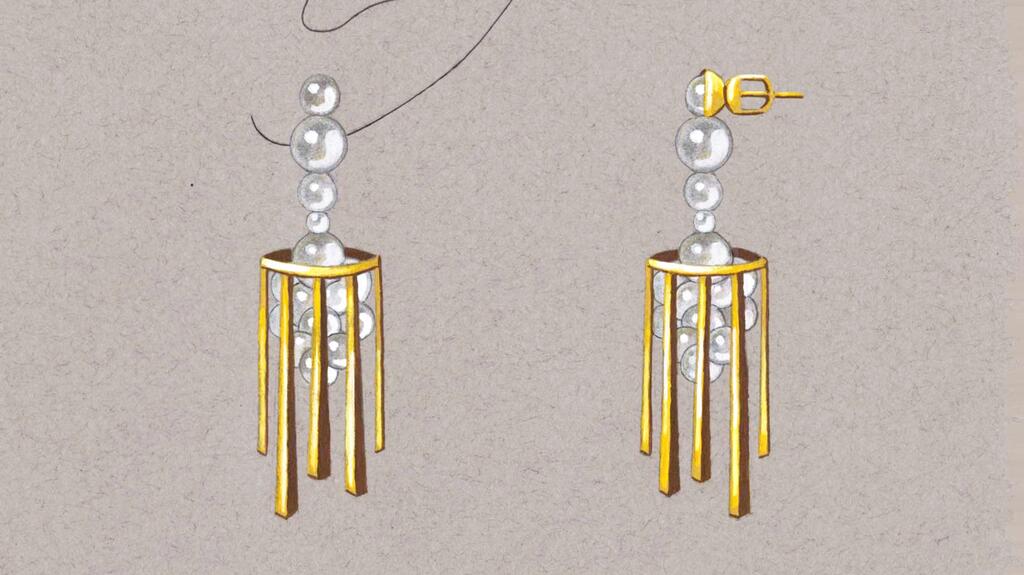
One winner was the “Voguedelier” earrings by Victor Rouesné, which were inspired by the Art Deco movement and Vogue magazine covers from the mid-1920s.
The design is meant to be crafted in 18-karat yellow gold with white freshwater pearls ranging in size from 3 mm to 7.5 mm.
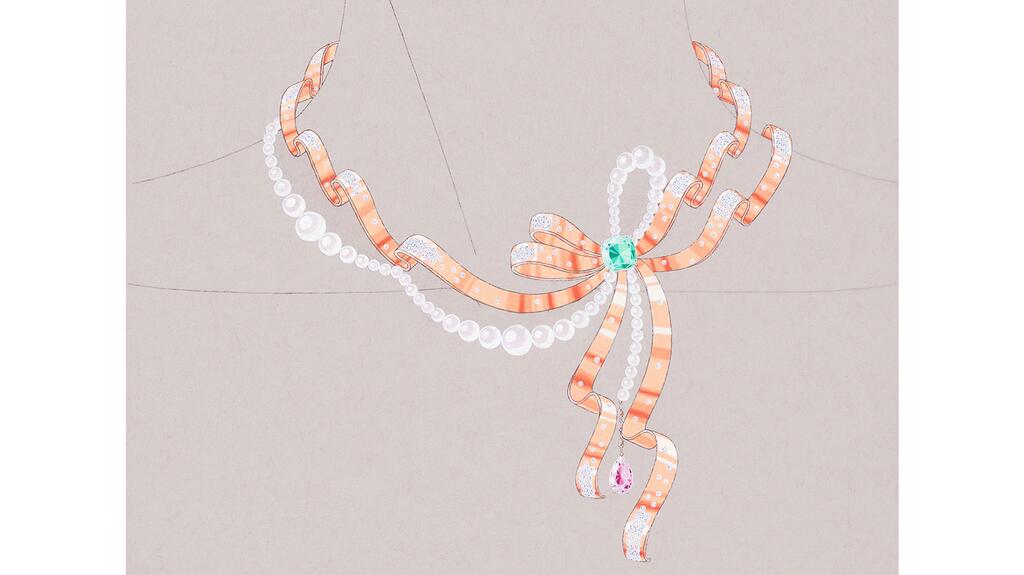
The second winner was the Ribbon statement necklace by Luna Gwak. The necklace would be made in 18-karat rose gold with Akoya pearls, white diamonds, pink morganite, and light green beryl.
Several pieces from the U.S. division will go on display and sale at the Aaron Faber Gallery in New York City.
The Latest

The filmmaker’s personal F.P. Journe “FFC” prototype was the star of Phillips’ recent record-setting watch auction in New York.

The new location in the Design District pays homage to Miami’s Art Deco heritage and its connection to the ocean.

Inflations, tariffs, and politics—including the government shutdown—were among consumers’ top concerns last month.

How Jewelers of America’s 20 Under 40 are leading to ensure a brighter future for the jewelry industry.

“Longtime favorite” presenters, as well as first-time speakers, will lead talks and workshops at the annual event in Tucson next year.


The sale of the 31.68-carat, sunset-hued stone was part of Sotheby’s first series of events and auctions in Abu Dhabi.

Most customers who walk into your store this month have made up their minds. Your job is to validate their choice, Emmanuel Raheb writes.

Roseco’s 704-page catalog showcases new lab-grown diamonds, findings, tools & more—available in print or interactive digital editions.

The collection features characters and motifs from Ukrainian folklore, including an enchanted mirror and a magic egg.

MatrixGold 3.11, the newest version of the jewelry design program, offers more flexibility, precision, and creative control.

Kadet, a 1994 National Jeweler Retailer Hall of Fame inductee, helped grow the family-owned retailer in the Chicago area and beyond.

Billed as the world’s smallest wearable, Lumia Health’s new smart earrings have a health tracker subtly embedded in the back.

Don’t let those with December birthdays feel blue. Help them celebrate their month with blue zircon, turquoise, and tanzanite.

The new pink sapphire version of the piece dances with its wearer in the brand’s “Icons After Dark” holiday campaign.

A choice that’s generated a lot of commentary, Pantone says “Cloud Dancer” marks a fresh start and encourages relaxation and creativity.

The manufacturer’s holiday campaign features a gift guide filled with trending designs and jewelry that can be personalized.

The man was charged with theft, accused of ingesting the necklace while in a jewelry store in Auckland, New Zealand.

The Florida independent expanded its store from 8,000 to 14,000 square feet, fulfilling the vision of its late co-founder, Jim Dunn.
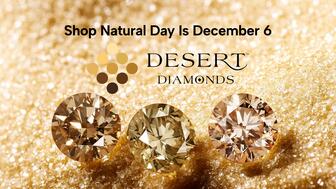
Sponsored by De Beers Group
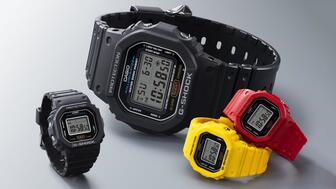
The classic 5600 series G-Shock has been scaled down to about a tenth of its size, becoming a fully functioning watch ring.

The association’s annual conference and gala will take place Feb. 4, 2026, during the Tucson gem shows.

The January show will include a workshop for jewelry retailers on implementing AI to strengthen their businesses.
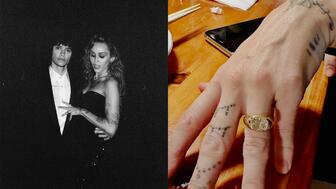
Fellow musician Maxx Morando proposed to the star with a chunky, cushion-cut diamond ring designed by Jacquie Aiche.

The retailer, which sells billions in fine jewelry and watches, is suing the Trump administration and U.S. Customs and Border Patrol.

Black Friday is still the most popular shopping day over the five-day holiday weekend, as per the National Retail Federation’s survey.
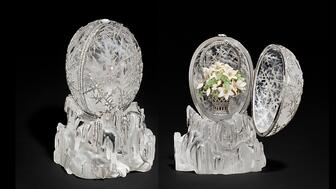
The historic egg, crafted for Russia's ruling family prior to the revolution, was the star of Christie’s recent auction of works by Fabergé.
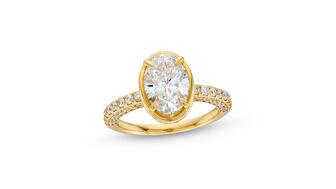
The retailer offered more fashion jewelry priced under $1,000, including lab-grown diamond and men’s jewelry.












